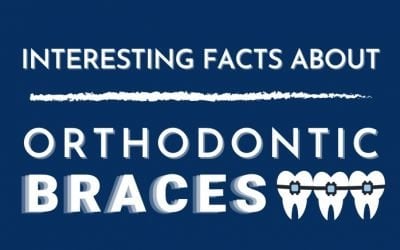How to Make Retainers More Comfortable
As with braces – retainers change the physical landscape of the inside of your mouth. Meaning? Retainers may feel tight and uncomfortable, and cause a lisp at first, as your body adjusts to the new appliances.
A retainer is a bespoke device crafted to fit the specific shape and alignment of your freshly-straightened teeth. It protects your new bite by ensuring the ligaments and tissue of your mouth stay in place. It can take many months for these areas to stabilise, so without regular prescribed use of your retainer, your teeth will eventually revert to their original crooked position – meaning you’re back at square one!
Read on for simple ideas on how to stop your retainers from hurting, as well as how long you can expect your retainer pain to last (hint, it’s not very long!)

How to make retainers more comfortable
- Wear them as prescribed. The most common cause of retainer pain? Not wearing your retainers as your orthodontist prescribed. Even a lapse of a few days can cause your teeth to shift slightly, making your retainer more likely to feel tight and uncomfortable when you put it back in. Wear your retainers religiously and you’ll prevent most retainer pain before it even begins.
- Over-the-counter pain medication. Well-fitting retainers generally do not cause a great deal of discomfort. It’s like a new pair of shoes and can take time for the plate/s to feel comfortable. Once your braces/ appliances are removed, your teeth may feel a little ‘loose” – this is because your teeth are used to being moved to a new location. Once in retention, your teeth will start to feel more firm and any discomfort should lessen within a few days to a week. Pharmacy medications such as paracetamol or ibuprofen aren’t a long-term solution to ease retainer pain, but they should help get you over the first few days of discomfort. Just remember to stick to the recommended dosage, and see your orthodontist if pain persists beyond the first week or so.
- Dental wax or Bonjela gel. Applying dental wax or Bonjela gel to any sore areas in your mouth or gums will help cushion them against initial rubbing or irritation from your retainers.
- Eat soft, cold foods. It’s best to stick to easily processed soft, cold foods if your retainers are causing you discomfort (but remember, you still need to remove them before eating!) Ice-cream, frozen yoghurt, smoothies and chilled soups are your best friends when it comes to fighting temporary retainer pain.
- Saltwater gargle. A simple saltwater gargle is a natural antiseptic, helping heal any tiny cuts or scratches inside your mouth and providing effective temporary pain relief.
- Cold pack. To help make your retainers more comfortable while your mouth adjusts, a simple ice pack will do the trick. Ice is an effective numbing agent and helps reduce inflammation – plus it’s cheap and simple to use. Iced water is another easy and effective alternative.
How long does a retainer hurt?
It’s natural for your retainer to hurt for at least the first day after being fitted, as your mouth adjusts to the novel sensation. Discomfort typically only lasts for four to five days – a week at most. If your retainer is causing you discomfort beyond this, it’s best to book a consult with your orthodontist. They’ll check everything is functioning as it should be and make any minor adjustments that may be necessary. As with all orthodontic treatment, prevention is better than cure – so get in early to ensure your retainer discomfort doesn’t snowball into hard-to-manage pain.
Click here to book a consult with a specialist orthodontist.
To read the original article, click here.
DISCLAIMER:
The content has been made available for informational and educational purposes only. Central Coast Orthodontics does not make any representation or warranties with respect to the accuracy, applicability, fitness, or completeness of the content.
The content is not intended to be a substitute for professional personal diagnosis or treatment. Always seek the advice of your dentist or another qualified health provider with any questions you may have regarding a dental or medical condition. Never disregard professional advice or delay seeking it because of something you have read or seen on the Site.
Learn More About
Related Articles
Unfinished Smiles Welcome Here – We’ll Pick Up Where You Left Off
Is Smile Direct Club’s insolvency leaving your teeth realignment process stranded? As Invisalign Diamond Plus providers…
Interesting Facts About Orthodontic Braces
Wanting to get orthodontic braces but feeling unsure because you don't have knowledge about its...
Three Benefits of Invisalign
Did you know that aside from being an option for straightening your teeth, there are also benefits...
Metal Braces: Does This Traditional Dental Technology Have a Future?
Of all the medical professions, dentistry has always generated the most fear and continues to;...







